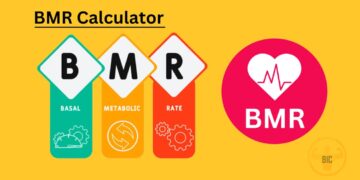If you’re a bodybuilder looking to enhance your muscular endurance, circuit training can be an effective and engaging approach. Circuit training involves performing a series of exercises in a sequence, with minimal rest in between. This type of training not only builds strength but also improves cardiovascular fitness and muscular endurance. In this article, we’ll explore the benefits of circuit training, how to design effective routines, and some key exercises to incorporate. Get ready to take your bodybuilding journey to the next level!
Introduction to Circuit Training
Circuit training is a versatile training method that involves performing a series of exercises in rapid succession. It challenges various muscle groups while keeping your heart rate elevated. This combination of strength and cardiovascular training makes it ideal for improving muscular endurance, a crucial factor in bodybuilding.
Benefits of Muscular Endurance in Bodybuilding
Muscular endurance is the ability of your muscles to sustain repeated contractions over an extended period. In bodybuilding, it allows you to perform more reps with proper form, leading to greater muscle development. Circuit training enhances this endurance by engaging muscles in a dynamic manner.

Designing an Effective Circuit Training Routine
Selecting Exercises
Choose exercises that target different muscle groups to ensure a balanced workout. Incorporate compound movements like squats, lunges, and push-ups, along with isolation exercises like bicep curls. This variety maximizes muscle engagement.
Determining Work and Rest Intervals
Keep work intervals (exercise duration) shorter than rest intervals to maintain intensity. For example, 30 seconds of exercise followed by 15 seconds of rest. This keeps your heart rate elevated, improving cardiovascular fitness.
Structuring the Circuit
Arrange exercises in a sequence that minimizes muscle fatigue. Alternate between upper and lower body exercises to allow recovery while working a different muscle group.

Top Circuit Training Exercises for Muscular Endurance
Push-Ups
Push-ups engage the chest, shoulders, and triceps. Start with a moderate rep range and gradually increase as your endurance improves.
Bodyweight Squats
Bodyweight squats target the quadriceps, hamstrings, and glutes. Focus on maintaining proper form throughout the movement.
Plank Variations
Planks strengthen the core and improve overall stability. Experiment with side planks and forearm planks for variety.
Dumbbell Lunges
Dumbbell lunges work the lower body and help develop balance and coordination. Hold dumbbells in each hand for added resistance.
Pull-Ups
Pull-ups target the back, biceps, and shoulders. If needed, use an assistive band to perform more reps.
Progression and Adaptation
Gradually increase the number of circuits and reps as your endurance improves. Incorporate more challenging exercises and adjust work/rest intervals accordingly.
Nutrition and Recovery
Fuel your body with a balanced diet to support muscle recovery and growth. Stay hydrated and prioritize quality sleep for optimal results.
Common Mistakes to Avoid
Avoid sacrificing form for quantity. Perform exercises with proper technique to prevent injuries.
Staying Motivated and Consistent
Set achievable goals and track your progress. Having a workout partner can also boost motivation and accountability.
Circuit Training vs. Traditional Strength Training
Circuit training offers a unique blend of strength and cardiovascular benefits, while traditional strength training focuses solely on lifting heavy weights.
Tracking Your Progress
Keep a workout journal to record your circuits, reps, and any adjustments. This helps you gauge improvements over time.
Tips for Injury Prevention
Warm-up adequately before each session, and listen to your body. Incorporate rest days to avoid over training.
Conclusion
Incorporating circuit training routines into your bodybuilding regimen can significantly enhance your muscular endurance and overall fitness. By carefully selecting exercises, structuring your circuit, and gradually progressing, you’ll achieve impressive results. Remember, consistency and proper nutrition are key to maximizing your gains.

FAQs
Q1: Is circuit training suitable for beginners in bodybuilding?
Yes, circuit training can be suitable for beginners in bodybuilding. In fact, it can be an excellent way to introduce newcomers to the world of strength training and endurance building. Circuit training allows beginners to work on multiple muscle groups in a single session while keeping the intensity at a manageable level.
For beginners, it’s important to start with a circuit that includes exercises with body weight or light resistance. This approach helps in building a foundation of strength and endurance while minimizing the risk of injury. Beginners can also control the pace of their workouts and gradually increase the intensity as they become more comfortable with the exercises.
Circuit training for beginners should focus on learning proper form and technique for each exercise. This foundation will set the stage for more advanced workouts as they progress in their bodybuilding journey. It’s also advisable to consult with a fitness professional or personal trainer to create a circuit routine tailored to individual fitness levels and goals.
Remember, the key is to start with manageable exercises, maintain proper form, and gradually increase the challenge as you build confidence and strength. Circuit training can provide a well-rounded workout experience for beginners and help lay the groundwork for more complex training routines in the future.
Q2: How often should I perform circuit training routines?
The frequency of performing circuit training routines depends on your fitness goals, current fitness level, and the intensity of the circuit. Generally, for beginners, it’s recommended to start with 2 to 3 sessions per week, allowing at least a day of rest between each session to give your muscles time to recover.
As you become more experienced and your body adapts to the training, you can gradually increase the frequency to 3 to 5 sessions per week. However, it’s important to listen to your body and avoid over training, which can lead to fatigue and injury. If you’re feeling excessively sore or fatigued, it’s a good idea to incorporate more rest days or opt for lower-intensity workouts.
Keep in mind that recovery is crucial for progress. Muscles need time to repair and grow stronger after each workout. If you’re combining circuit training with other forms of exercise, such as cardio or traditional strength training, be mindful of balancing your overall workout routine to prevent burnout.
In summary, starting with 2 to 3 circuit training sessions per week and gradually increasing the frequency as your fitness improves is a sensible approach. However, always pay attention to your body’s signals and adjust your training schedule accordingly to ensure effective results without risking injury or overexertion.
Q3: Can I combine circuit training with traditional strength training?
Absolutely, combining circuit training with traditional strength training can be a strategic and effective approach to achieving well-rounded fitness and muscle development. These two training methods complement each other and offer unique benefits that can enhance your overall progress.
Circuit training primarily focuses on improving cardiovascular fitness, muscular endurance, and burning calories. It involves performing a series of exercises with minimal rest, which keeps your heart rate elevated and targets various muscle groups. On the other hand, traditional strength training involves lifting heavier weights with longer rest intervals to focus on building muscle strength and size.
By incorporating both approaches, you can reap the benefits of both worlds. Circuit training can improve your muscular endurance and help you shed excess body fat, while traditional strength training can lead to increased muscle mass and strength.
Here’s how you can effectively combine these two methods:
- Separate Sessions: Designate specific days for circuit training and traditional strength training. For example, you could do circuit training on Mondays and Thursdays, and traditional strength training on Tuesdays and Fridays.
- Focus on Different Muscle Groups: Structure your workouts so that you target different muscle groups with each training method. This allows for adequate recovery while maximizing overall muscle development.
- Vary Intensity: Adjust the intensity of your circuit training and strength training sessions. For instance, you could have high-intensity circuit sessions followed by lower-intensity strength sessions.
- Prioritize Recovery: As you’re engaging in both types of training, recovery becomes even more crucial. Make sure you’re getting enough sleep, staying hydrated, and paying attention to your nutrition.
- Listen to Your Body: If you find that combining these methods becomes too demanding or interferes with your recovery, don’t hesitate to adjust the frequency or intensity as needed.
Remember, every individual’s fitness level and goals are unique, so tailor your approach accordingly. By combining circuit training and traditional strength training, you can enjoy a well-balanced workout routine that enhances various aspects of your fitness journey.
Q4: What should I eat before a circuit training session?
Eating the right foods before a circuit training session can provide you with the energy and nutrients needed to perform at your best and recover effectively. Here are some guidelines on what to eat before a circuit training session:
- Carbohydrates: Carbohydrates are your body’s primary source of energy. Choose complex carbohydrates like whole grains, fruits, and vegetables. These provide sustained energy throughout your workout. Opt for foods like oatmeal, whole grain bread, brown rice, or fruits like bananas and berries.
- Protein: Protein is essential for muscle repair and recovery. Including some protein in your pre-workout meal can help prevent muscle breakdown during the workout. Good sources of protein include lean meats, poultry, fish, eggs, Greek yogurt, or plant-based options like tofu or legumes.
- Healthy Fats: Healthy fats provide a source of long-lasting energy. Incorporate sources of healthy fats such as avocados, nuts, seeds, and olive oil. These fats can help stabilize your blood sugar levels and keep you satisfied during your workout.
- Hydration: Proper hydration is crucial for optimal performance. Drink water before your workout to ensure you’re well-hydrated. Dehydration can lead to decreased energy levels and performance.
- Timing: Aim to eat a balanced meal containing carbohydrates, protein, and fats about 1 to 2 hours before your circuit training session. This gives your body enough time to digest the food and convert it into usable energy.
- Snack Options: If you have a shorter time window before your workout, opt for a light snack that is easy to digest. A banana with nut butter, a small yogurt with some berries, or a handful of nuts can be good options.
- Avoid Heavy or Greasy Foods: Avoid foods that are heavy, greasy, or high in added sugars right before your workout. These can cause discomfort during exercise.
- Personal Preferences: Consider your personal preferences and how your body responds to different foods. Everyone’s digestive system is unique, so pay attention to how you feel during your workouts after consuming certain foods.
Q5: Is circuit training effective for fat loss as well?
Yes, circuit training can be highly effective for fat loss. In fact, it’s one of the most efficient workout methods for shedding excess body fat while simultaneously building lean muscle mass. The combination of cardiovascular exercise and resistance training in circuit training creates a powerful fat-burning effect.
Here’s how circuit training contributes to fat loss:
- High Calorie Burn: Circuit training involves performing a series of exercises with minimal rest between them. This keeps your heart rate elevated throughout the workout, leading to a higher calorie burn compared to traditional strength training.
- Metabolic Boost: The intensity of circuit training increases your metabolic rate, both during the workout and in the hours that follow. This phenomenon, known as the “afterburn” effect or excess post-exercise oxygen consumption (EPOC), helps your body continue to burn calories even after you’ve finished exercising.
- Preservation of Lean Muscle: Circuit training incorporates both cardiovascular exercises and resistance exercises. This helps preserve and even build lean muscle mass. Muscle tissue requires more energy to maintain than fat tissue, so having more muscle increases your resting metabolic rate, further contributing to fat loss.














































